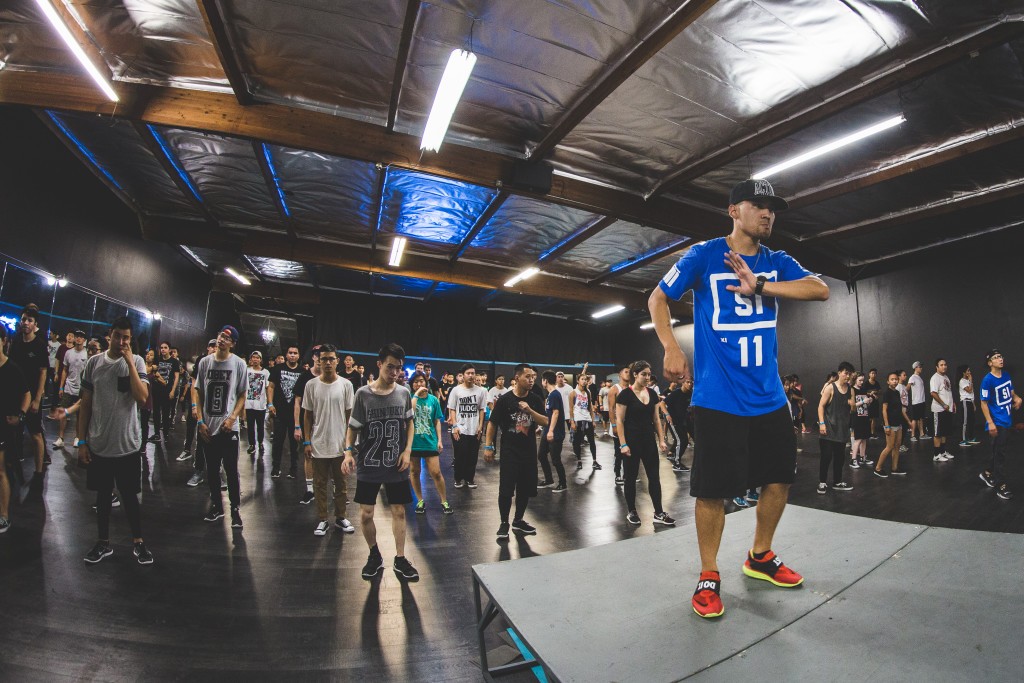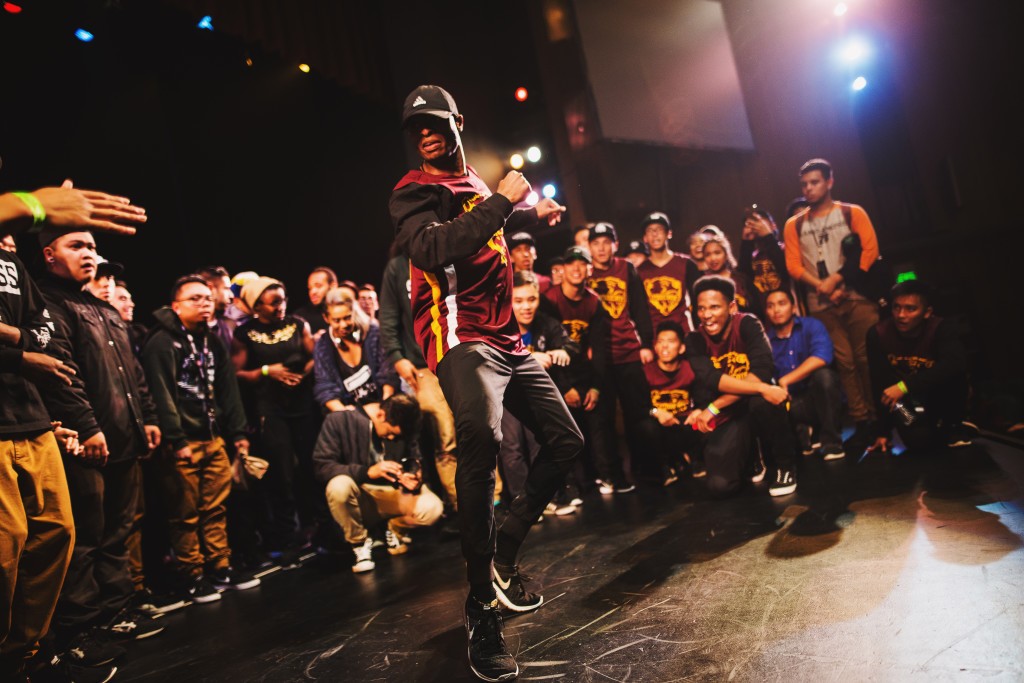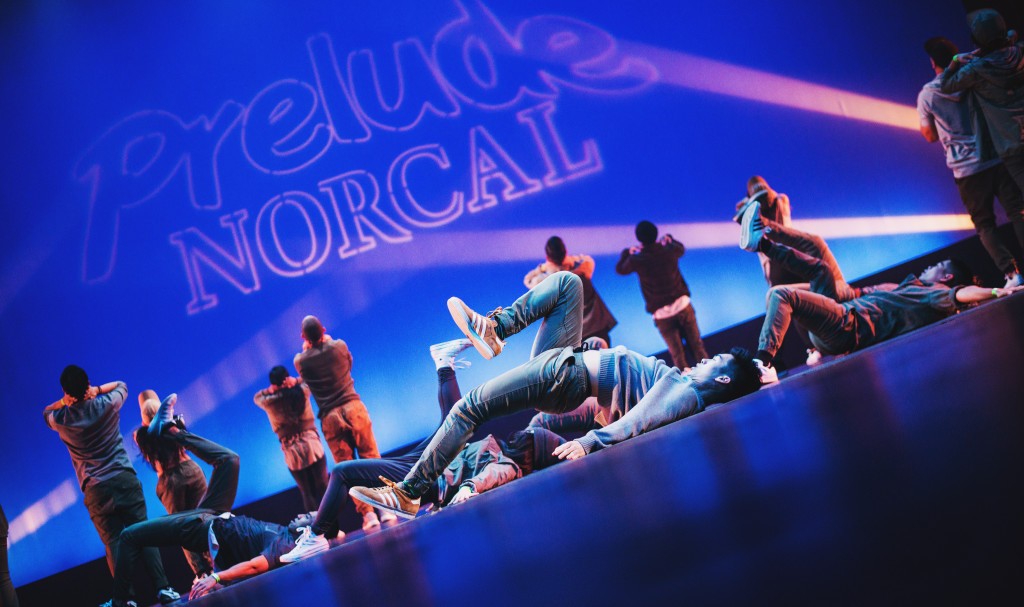Learning dance from scratch can seem daunting, but it’s entirely achievable with the right approach. This guide, brought to you by LEARNS.EDU.VN, provides a structured pathway to help you master dance basics, develop your skills, and find the style that suits you best. Discover effective methods and resources to begin your dance journey today. With dedication, the right resources, and the support of platforms like LEARNS.EDU.VN, anyone can learn to dance, regardless of age or experience.
1. Understanding Your Motivation and Goals
Before diving into the world of dance, it’s important to understand why you want to learn. Are you looking to improve your physical fitness, express yourself creatively, or simply have fun? Defining your goals will help you stay motivated and choose the right dance style and learning approach.
-
Why do you want to learn to dance?
- Fitness: Dancing is a great way to improve cardiovascular health, strength, and flexibility.
- Creativity: Dance allows you to express yourself through movement and rhythm.
- Social: Dancing can be a fun and social activity, providing opportunities to meet new people.
- Personal: Some people learn to dance to build confidence, overcome shyness, or achieve a personal goal.
-
What are your short-term and long-term goals?
- Short-term: Learn basic steps, complete a beginner’s course, or perform at a local event.
- Long-term: Master a specific dance style, join a dance group, or perform professionally.
-
What kind of dance style are you interested in?
- Consider the music you enjoy, the types of movements that appeal to you, and the overall vibe of the dance style.
Setting Realistic Expectations
According to a study by the University of Illinois, consistent practice and clear goals are crucial for success in learning any new skill. It’s essential to set realistic expectations to avoid discouragement. Progress in dance, like any art form, takes time and dedication.
2. Choosing the Right Dance Style
Selecting the right dance style is a crucial step. There are numerous dance styles, each with its unique characteristics and requirements. Consider your personal preferences, physical abilities, and goals when making your choice.
Popular Dance Styles for Beginners
- Ballet: Known for its elegance and precision, ballet provides a strong foundation in technique and body awareness.
- Hip Hop: Energetic and expressive, hip hop is a great way to improve rhythm and coordination.
- Salsa: A lively and social dance, salsa is perfect for those who enjoy Latin music and partner work.
- Contemporary: Emphasizing fluidity and emotion, contemporary dance allows for personal expression and creativity.
- Ballroom: Including dances like Waltz, Tango, and Foxtrot, ballroom dancing is elegant and structured, ideal for social events and formal settings.
Factors to Consider
- Personal Preferences: What kind of music do you enjoy? What type of movements appeal to you? Choose a style that excites and motivates you.
- Physical Abilities: Some styles require more strength, flexibility, or stamina than others. Consider your current fitness level and any physical limitations.
- Learning Resources: Are there classes, workshops, or online resources available for the style you’re interested in?
3. Finding Resources for Learning Dance
Once you’ve chosen a dance style, the next step is to find the right resources to help you learn. Fortunately, there are many options available, from in-person classes to online tutorials.
In-Person Classes
- Local Dance Studios: Taking classes at a local dance studio provides structured instruction, personalized feedback, and a social environment.
- Community Centers: Many community centers offer affordable dance classes for beginners.
- Workshops and Intensives: These shorter, more focused programs can be a great way to learn specific techniques or styles.
Online Resources
- Online Dance Platforms: Websites like LEARNS.EDU.VN offer a wide range of dance tutorials and classes for all levels. These platforms often provide structured programs, progress tracking, and feedback from instructors.
- YouTube Channels: Many talented dancers and instructors share free tutorials on YouTube. This can be a great way to supplement your learning or explore different styles.
- Dance Apps: Several mobile apps offer interactive dance lessons and practice tools.
A recent study by the University of Southern California highlighted the effectiveness of blended learning approaches, combining online resources with in-person instruction to enhance skill development.
Creating a Learning Environment at Home
- Designate a Practice Space: Choose a space in your home where you can move freely without obstacles. Ensure the floor is smooth and safe for dancing.
- Install Mirrors: Mirrors can help you see your movements and correct your form.
- Use Technology: Utilize online tutorials, dance apps, and music streaming services to enhance your practice sessions.
4. Mastering the Basic Steps and Techniques
Regardless of the dance style you choose, mastering the basic steps and techniques is essential. This foundation will allow you to progress to more complex movements and routines.
Fundamental Elements of Dance
- Posture: Proper posture is crucial for balance, alignment, and preventing injuries. Stand tall, engage your core, and keep your shoulders relaxed.
- Rhythm: Understanding and internalizing the rhythm is essential for timing your movements correctly. Practice counting beats and moving in time with the music.
- Coordination: Developing coordination involves synchronizing different parts of your body to execute movements smoothly. Start with simple exercises and gradually increase the complexity.
- Flexibility: Improving your flexibility will allow you to move more freely and execute a wider range of movements. Incorporate stretching exercises into your daily routine.
Basic Steps in Popular Dance Styles
- Ballet: Plié, tendu, dégagé, relevé
- Hip Hop: Bounce, groove, step touch, grapevine
- Salsa: Basic step, cross-body lead, right turn
- Contemporary: Contraction, release, spiral, hinge
- Ballroom: Box step (Waltz), tango walk, chasse (Foxtrot)
Effective Practice Techniques
- Start Slow: Begin by practicing the steps slowly and gradually increase the tempo as you become more comfortable.
- Break It Down: Divide complex movements into smaller, more manageable parts. Practice each part separately before putting them together.
- Use Visual Aids: Watch videos, use mirrors, and ask for feedback to identify areas for improvement.
- Record Yourself: Recording your practice sessions can help you see your progress and identify areas where you need to focus.
- Consistency is Key: Practice regularly, even if it’s just for a few minutes each day. Consistent practice will help you build muscle memory and improve your skills.
5. Developing Your Musicality and Expression
While mastering the technical aspects of dance is important, it’s equally important to develop your musicality and expression. This involves connecting with the music, interpreting the rhythm and emotion, and expressing yourself through movement.
Understanding Musicality
- Listen Actively: Pay attention to the different elements of the music, such as the beat, melody, harmony, and dynamics.
- Identify the Rhythm: Practice counting beats and identifying rhythmic patterns.
- Connect Movement to Music: Experiment with different ways of interpreting the music through your movements.
Expressing Yourself Through Dance
- Embrace Emotion: Allow yourself to feel the emotions conveyed by the music and express them through your movements.
- Use Facial Expressions: Your facial expressions can enhance your performance and convey emotion to the audience.
- Incorporate Personal Style: Develop your own unique style by adding personal touches to your movements and choreography.
- Tell a Story: Think about the story or message you want to convey through your dance and use your movements to communicate it.
Exercises to Improve Musicality and Expression
- Improvisation: Practice improvising to different types of music. This will help you develop your ability to connect with the music and express yourself spontaneously.
- Choreography Analysis: Watch professional dance performances and analyze how the dancers use their movements to interpret the music and convey emotion.
- Emotional Recall: Practice recalling specific emotions and expressing them through your movements.
According to research from Stanford University, incorporating emotional and expressive elements into dance training can significantly enhance a dancer’s overall performance and audience engagement.
6. Staying Motivated and Overcoming Challenges
Learning dance can be challenging, and it’s natural to experience setbacks and moments of discouragement. Staying motivated and developing strategies for overcoming challenges is essential for long-term success.
Setting Achievable Goals
- Break Down Large Goals: Divide your long-term goals into smaller, more manageable steps. This will make the process feel less overwhelming and provide you with a sense of accomplishment as you progress.
- Celebrate Progress: Acknowledge and celebrate your achievements, no matter how small. This will help you stay motivated and build confidence.
Finding a Supportive Community
- Join a Dance Group: Dancing with others can provide encouragement, inspiration, and a sense of belonging.
- Connect with Other Dancers Online: Online forums and social media groups can be a great way to connect with other dancers, share experiences, and get advice.
- Seek Feedback: Ask for feedback from instructors, peers, or mentors. Constructive criticism can help you identify areas for improvement and stay on track.
Overcoming Common Challenges
- Lack of Time: Schedule regular practice sessions and treat them as important appointments. Even short, frequent sessions can be effective.
- Fear of Judgment: Remember that everyone starts somewhere. Focus on your own progress and don’t worry about what others think.
- Plateaus: It’s normal to experience plateaus in your learning. Try changing your practice routine, focusing on different aspects of your dancing, or seeking new challenges.
- Injuries: Take care of your body and listen to its signals. Warm up properly before each practice session and cool down afterwards. If you experience pain, stop and rest. Consult a healthcare professional if necessary.
7. Exploring Advanced Techniques and Styles
Once you’ve mastered the basics and developed a solid foundation, you can begin to explore more advanced techniques and styles. This is where you can truly personalize your dance journey and express your unique artistic vision.
Advanced Techniques
- Turns: Pirouettes, fouettés, and other turns require balance, coordination, and precision.
- Jumps: Jetés, sautés, and other jumps require strength, power, and control.
- Partnering: Lifting, balancing, and coordinating movements with a partner require trust, communication, and technique.
Specialized Styles
- Jazz: Characterized by syncopation, improvisation, and dynamic movements.
- Tap: Involves creating rhythmic sounds with your feet using special shoes.
- Lyrical: Combines elements of ballet and contemporary dance to express emotions through fluid movements.
- Breaking (B-girling/B-boying): A dynamic and acrobatic style of hip hop dance.
Continuing Your Dance Education
- Attend Workshops and Master Classes: These events provide opportunities to learn from experienced instructors and dancers.
- Take Certification Courses: Some dance styles offer certification programs that can enhance your skills and credentials.
- Travel to Dance Events: Attending dance festivals, competitions, and performances can inspire you and expose you to new styles and techniques.
8. Incorporating Cross-Training and Conditioning
To enhance your dance performance and prevent injuries, it’s important to incorporate cross-training and conditioning exercises into your routine. These activities will improve your strength, flexibility, stamina, and overall fitness.
Strength Training
- Bodyweight Exercises: Push-ups, squats, lunges, and planks can help you build strength without equipment.
- Weightlifting: Using weights can help you target specific muscle groups and increase your overall strength.
- Resistance Bands: Resistance bands are a versatile and portable tool for strength training.
Flexibility Training
- Static Stretching: Holding stretches for an extended period of time to increase flexibility.
- Dynamic Stretching: Moving through a range of motion to improve flexibility and warm up muscles.
- Yoga and Pilates: These practices combine stretching, strength training, and mindfulness to improve flexibility and body awareness.
Cardiovascular Training
- Running: Running can improve your cardiovascular health and stamina.
- Swimming: Swimming is a low-impact exercise that can improve your cardiovascular health and flexibility.
- Cycling: Cycling can improve your cardiovascular health and leg strength.
Sample Cross-Training Schedule
| Day | Activity | Duration | Focus |
|---|---|---|---|
| Monday | Strength Training | 45 mins | Upper body and core |
| Tuesday | Dance Practice | 60 mins | Technique and choreography |
| Wednesday | Yoga/Pilates | 60 mins | Flexibility and body awareness |
| Thursday | Cardiovascular Training | 30 mins | Running or cycling |
| Friday | Dance Practice | 60 mins | Improvisation and musicality |
| Saturday | Rest or Active Recovery | 30 mins | Light stretching or foam rolling |
| Sunday | Long Dance Practice | 90 mins | Review and advanced techniques |



9. Utilizing Technology and Apps for Practice
Technology can be a great asset in your dance journey. There are numerous apps and tools available to help you practice, track your progress, and connect with other dancers.
Dance Practice Apps
- STEEZY Studio: Offers a wide range of dance classes and tutorials for various styles.
- PocketDance: Provides interactive dance lessons and progress tracking.
- Dance Reality: Uses augmented reality to overlay dance instructions onto your real-world environment.
Music Streaming Services
- Spotify: Offers a vast library of music for all dance styles.
- Apple Music: Provides curated playlists and personalized recommendations.
- SoundCloud: A platform for discovering independent artists and remixes.
Video Recording and Analysis Tools
- Hudl Technique: Allows you to record and analyze your movements in slow motion.
- Coach’s Eye: Provides tools for annotating and sharing videos with instructors and peers.
Social Media and Online Communities
- Instagram: A platform for sharing dance videos and connecting with other dancers.
- Facebook: Many dance groups and communities have Facebook pages where you can share information and connect with others.
- TikTok: A popular platform for creating and sharing short dance videos.
10. Performing and Sharing Your Dance
One of the most rewarding aspects of learning dance is the opportunity to perform and share your passion with others. Whether you perform on stage, in a social setting, or online, sharing your dance can be a fulfilling and empowering experience.
Performance Opportunities
- Local Dance Studios: Many dance studios offer performance opportunities for their students.
- Community Events: Look for opportunities to perform at local festivals, fairs, and charity events.
- Open Mic Nights: Some venues host open mic nights where you can showcase your dance skills.
- Dance Competitions: Participating in dance competitions can be a great way to challenge yourself and gain exposure.
Sharing Your Dance Online
- Create a YouTube Channel: Share your dance videos with the world and build a following.
- Post on Social Media: Share short dance clips on Instagram, TikTok, and other social media platforms.
- Join Online Dance Communities: Connect with other dancers and share your work in online forums and groups.
Tips for Performing
- Practice Thoroughly: Rehearse your routine until you feel confident and comfortable.
- Dress the Part: Choose attire that is appropriate for the style of dance and the venue.
- Warm Up: Warm up your muscles before performing to prevent injuries.
- Visualize Success: Imagine yourself performing flawlessly and feeling confident.
- Have Fun: Remember to enjoy the experience and let your passion shine through.
Advice From Dance Professionals
According to interviews with professional dancers, the key to a successful performance is preparation, confidence, and the ability to connect with the audience. Focus on telling a story through your movements and expressing your passion for dance.
FAQ: Your Questions About Learning to Dance Answered
- Is it possible to learn to dance from scratch at home?
Yes, it is absolutely possible. With online resources, dedicated practice, and a structured approach, you can learn the fundamentals and progress significantly at home. - What is the best age to start learning dance?
There is no best age. People of all ages can learn to dance. Starting younger may provide a longer foundation, but adults can also achieve great results with dedication. - How much time should I dedicate to practice each week?
Aim for at least 2-3 hours of practice per week. Consistency is more important than the duration of each session. Even 30 minutes a day can be effective. - Do I need a partner to learn how to dance?
No, many dance styles can be learned solo. Styles like ballet, hip hop, and contemporary do not require a partner. Partner dances like salsa and ballroom can be learned with or without a partner initially. - What equipment do I need to start dancing at home?
You don’t need much to start. A smooth, safe floor, comfortable clothing, and access to music or online tutorials are sufficient. Mirrors can be helpful but are not essential. - How can I improve my flexibility for dance?
Incorporate regular stretching exercises into your routine. Focus on both static and dynamic stretches, and consider practices like yoga or Pilates. - What should I do if I feel discouraged or frustrated?
Take a break, review your goals, and celebrate your progress. Connect with other dancers for support and seek feedback from instructors or mentors. - How do I find the right dance style for me?
Experiment with different styles, consider your personal preferences and physical abilities, and attend introductory classes or workshops. - Is it necessary to have natural talent to become a good dancer?
While natural talent can be an advantage, it is not essential. Hard work, dedication, and effective practice are more important factors for success. - Can I learn to dance if I have no rhythm?
Yes, rhythm can be learned and improved with practice. Focus on counting beats, listening to music actively, and practicing rhythmic exercises.
Conclusion: Start Your Dance Journey Today
Learning to dance from scratch is a rewarding journey that offers physical, mental, and emotional benefits. By understanding your motivations, choosing the right style, finding the right resources, and staying committed to practice, you can achieve your dance goals and unlock your full potential. Whether you dream of performing on stage or simply want to enjoy the joy of movement, now is the perfect time to start your dance journey. And remember, LEARNS.EDU.VN is here to support you every step of the way with comprehensive resources, expert guidance, and a vibrant community of learners. Take the first step towards your dance aspirations today!
Ready to dive deeper into the world of dance? Visit LEARNS.EDU.VN to explore our comprehensive range of dance tutorials, expert tips, and supportive community. Our platform is designed to help you learn at your own pace, master new skills, and achieve your dance goals. Don’t wait—start your dance adventure with LEARNS.EDU.VN today and discover the joy of movement! Address: 123 Education Way, Learnville, CA 90210, United States. Whatsapp: +1 555-555-1212. Website: learns.edu.vn
